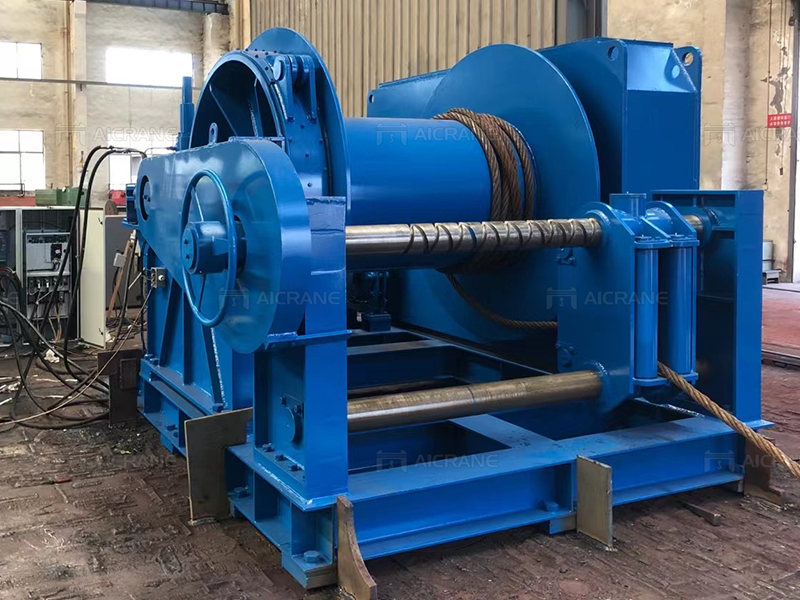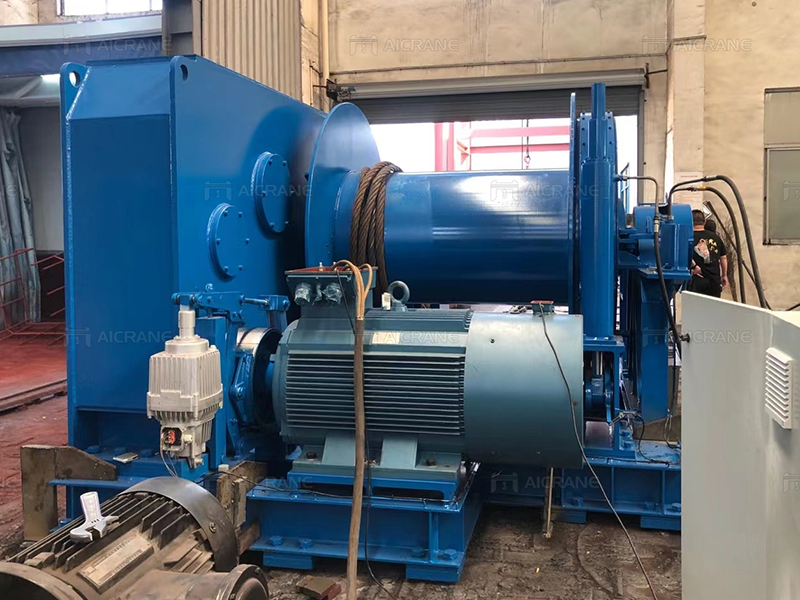In the demanding landscape of heavy-duty applications, the selection of equipment plays a pivotal role in ensuring operational efficiency, safety, and longevity. When it comes to 50-ton winches, environmental conditions exert a profound influence on their performance and durability. In this article, we delve into the crucial factors that mining, construction, and industrial operators must consider when selecting a 50-ton winch, taking into account the diverse challenges posed by varying environmental conditions.

Understanding the Role of 50-Ton Winches
Before delving into the impact of environmental conditions, it’s essential to grasp the significance of 50-ton winches in various industries. These robust winches are utilized in applications such as construction, mining, marine, and heavy material handling, where the need to lift and move substantial loads is a daily requirement. From hauling materials in mines to assisting with construction projects, the versatility of a 50-ton winch is unmatched.
Environmental Factors Influencing Winch Selection
Temperature Extremes: Operating in environments with extreme temperatures poses significant challenges for equipment durability. High temperatures can accelerate wear and reduce the efficiency of winch components, while extremely low temperatures can lead to issues like freezing of hydraulic fluids. Selecting a 50-ton winch with temperature-resistant materials and suitable lubricants is imperative to ensure reliable operation in diverse climates.
Corrosive Environments: Industries such as marine, offshore, and chemical processing expose winches to corrosive elements like saltwater, chemicals, and corrosive gases. Corrosion-resistant materials, protective coatings, and regular maintenance are crucial considerations when selecting a 50-ton winch for operations in these harsh environments. Stainless steel components are often preferred for their resistance to corrosion.
Dust and Particulate Matter: Construction sites, mines, and certain industrial settings are notorious for generating dust and particulate matter. These airborne particles can infiltrate winch mechanisms, affecting performance and longevity. Sealed and protected winch systems, along with effective filtration, become essential in mitigating the impact of dust on 50-ton winches.
Moisture and Humidity: Environments with high humidity or constant exposure to moisture pose challenges to winch components, leading to issues like rust, electrical malfunctions, and degradation of materials. Waterproofing and corrosion-resistant features become critical in ensuring the durability of a 50-ton winch operating in these conditions.
Altitude and Atmospheric Pressure: Applications at high altitudes or in low-pressure environments, such as mountainous regions, can affect the performance of hydraulic systems in winches. Understanding the atmospheric conditions at the operating site is crucial for selecting winches with appropriate hydraulic components and adjusting operational parameters accordingly.

Key Considerations in 50-Ton Winch Selection
Material Selection: The construction materials used in a 50-ton winch play a vital role in determining its resistance to environmental factors. Stainless steel, aluminum, and other corrosion-resistant alloys are commonly employed to enhance the longevity of winch components, especially in corrosive or humid conditions.
Sealing and Encapsulation: Effective sealing mechanisms are imperative to protect the internal components of an industrial winch from dust, moisture, and other environmental contaminants. IP (Ingress Protection) ratings indicate the level of protection a winch offers against solids and liquids, aiding operators in making informed decisions based on the specific environmental challenges.
Cooling and Ventilation: High temperatures can adversely affect the efficiency of winch components, particularly in continuous or heavy-duty operations. Winches equipped with efficient cooling systems, such as fans or heat exchangers, help dissipate heat and maintain optimal operating temperatures.
Corrosion Protection: In corrosive environments, winches should feature robust corrosion protection measures. This may include coatings such as galvanization or specialized anti-corrosion treatments on critical components. Regular inspections and maintenance routines are also essential to identify and address corrosion issues promptly.
Temperature-Resilient Lubricants: The choice of lubricants is crucial in environments with extreme temperatures. Employing temperature-resilient lubricants ensures that winch components operate smoothly, even in conditions where conventional lubricants may lose their effectiveness.
Environmental Monitoring Systems: Some modern 50-ton winches come equipped with environmental monitoring systems that provide real-time data on factors such as temperature, humidity, and atmospheric pressure. These systems enable operators to adjust operational parameters based on current environmental conditions, optimizing performance and ensuring longevity.
Compliance with Standards: Ensuring that a 50-ton winch complies with industry standards and certifications for environmental resistance is vital. Certification bodies, such as the International Electrotechnical Commission (IEC) and industry-specific regulatory bodies, set standards that validate the performance of equipment in various environmental conditions.
Case Studies
Mining Winch in Dusty Environments:
A mining operation in a desert region facing constant exposure to airborne dust selected a 50-ton winch with a high IP rating and effective dust-sealing mechanisms. Regular maintenance, including air filter replacements, ensured the winch’s longevity and reliable operation in the challenging dusty environment.
Offshore Winch for Marine Applications:
An offshore drilling platform required a winch for material handling in a corrosive saltwater environment. The chosen 50-ton winch featured stainless steel components, specialized corrosion-resistant coatings, and regular freshwater washdowns to prevent saltwater buildup. These measures proved effective in maintaining the winch’s integrity over time.
Conclusion
The selection of a 50-ton winch is a nuanced process that necessitates a thorough understanding of the environmental conditions in which it will operate. From extreme temperatures and corrosive atmospheres to dust-laden environments, each factor contributes to the wear and tear of winch components. By carefully considering material choices, sealing mechanisms, cooling systems, and compliance with industry standards, operators can ensure that their 50-ton winches not only meet performance expectations but also stand resilient against the diverse challenges posed by environmental conditions. As industries continue to evolve, the development of advanced technologies and materials will likely contribute to even more robust and adaptable winch solutions, further enhancing their performance and reliability in a variety of environments.